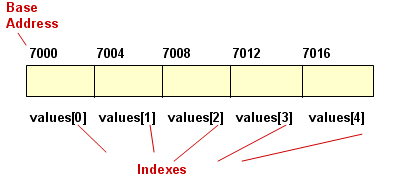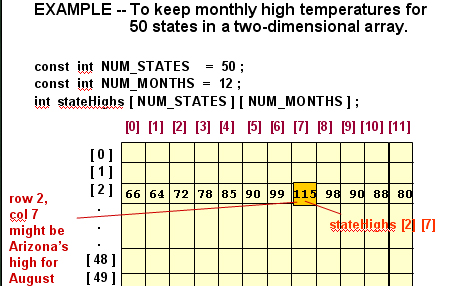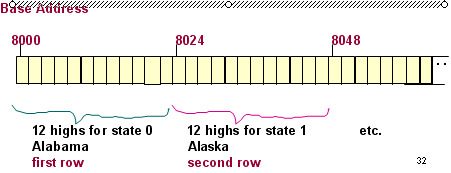Arrays
Logical Level
|
Application Level
|
Implementation Level
float values[5]; |
Q: Arrays in C++ are always passed by reference (e.g. type function(int
array[],...) )
|
||
N-D arrays
|
||
Arrays cannot be assigned one to another, and cannot be the return type of a function. |
||
Using typedef with arrays
|
||
Deleting an ArrayTo delete an array, we need to tell the compiler we are deleting an array, and not just an element. The syntax is: delete [] arrayName;
Deleting 2d arrays takes a little more work. Since a 2d array is an array of arrays, we must first delete all the elements in each of the arrays, and then we can delete the array that contains them. Assuming we had created a 2d array called 2dArray, we could delete
it as follows: for(int i=0; i < (number of arrays); i++) delete [] 2dArray; |


